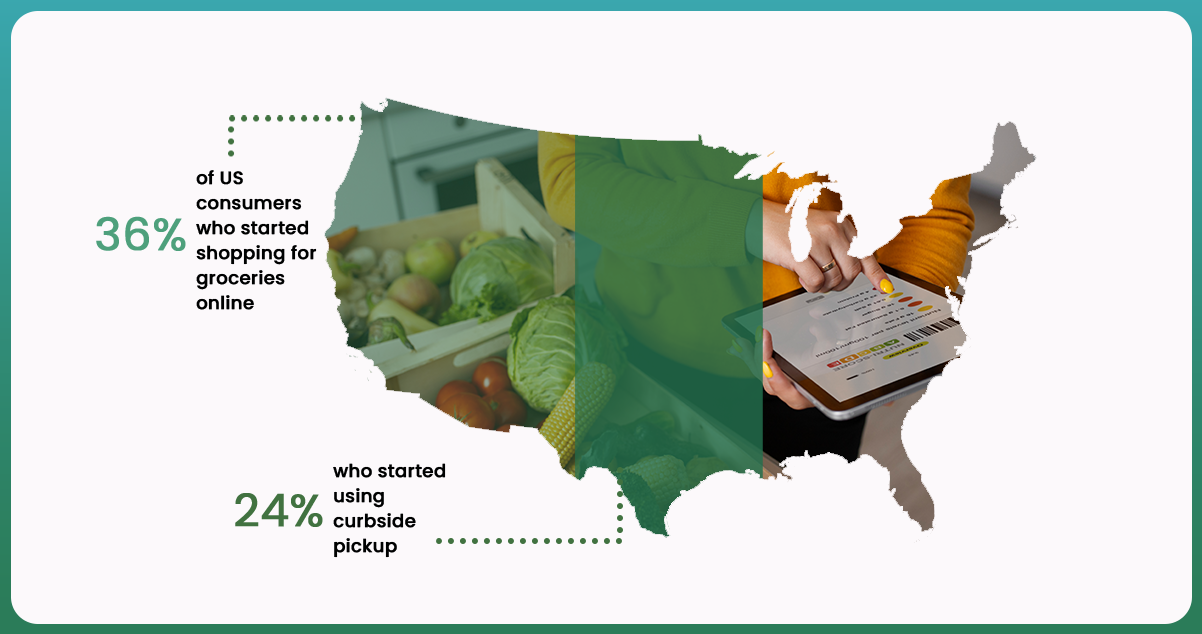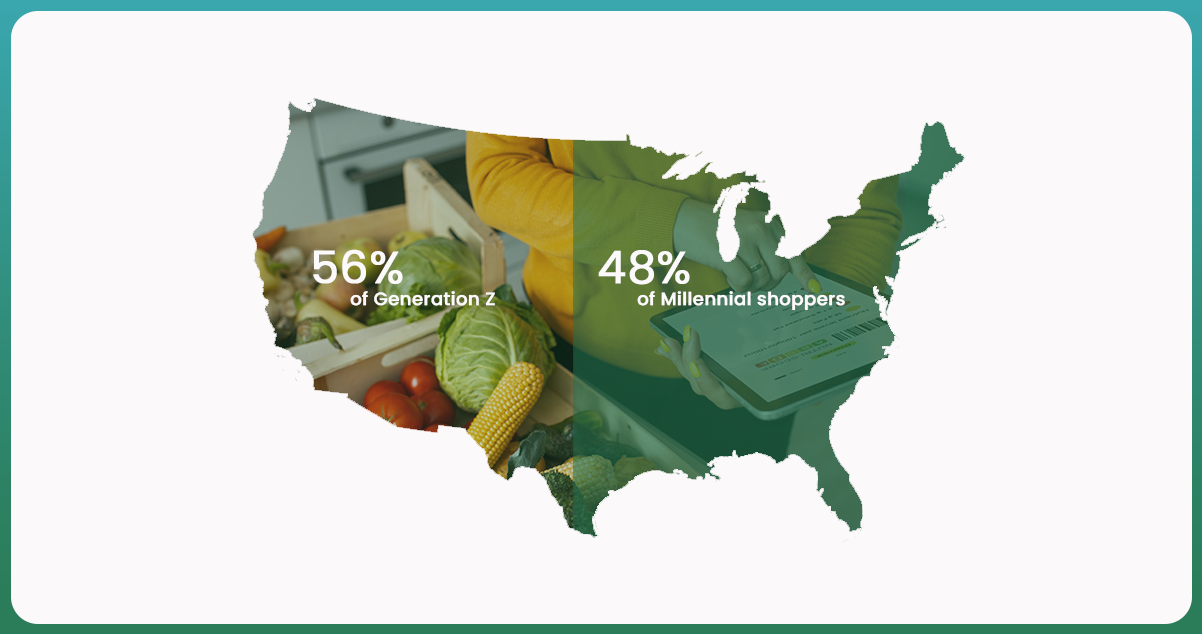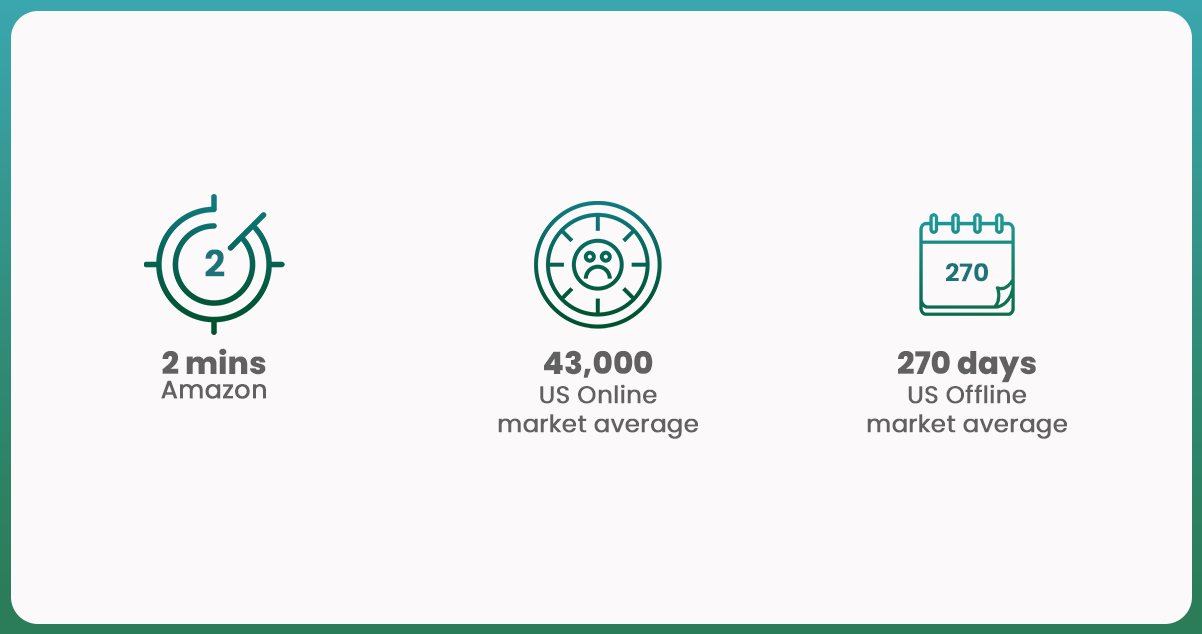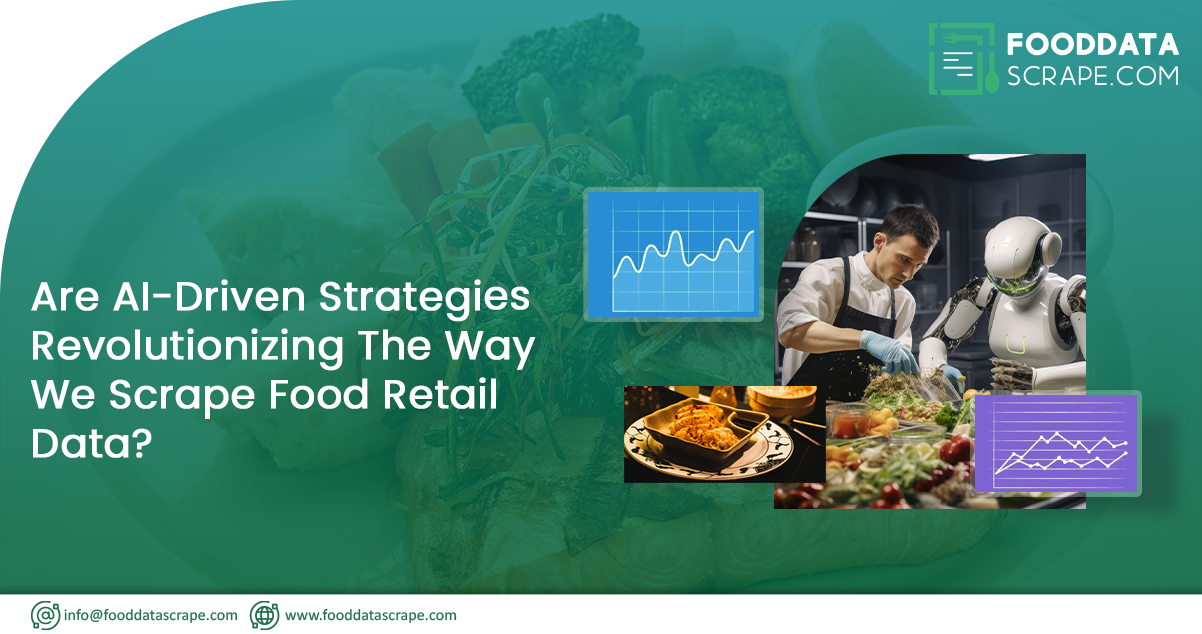2020 witnessed a significant surge in online shopping adoption due to the global pandemic, pushing eCommerce into the mainstream across diverse consumer demographics. This unprecedented shift accelerated the timeline for the widespread acceptance of online retail by several years. Notably, the food and beverage, grocery, and edible consumer packaged goods (CPG) sectors experienced a remarkable surge in online orders, creating an unprecedented demand during the COVID-19 crisis.
This transformation in consumer behavior is not a fleeting trend but a lasting shift, requiring brands and retailers to seize the opportunity presented by the growing cohort of online shoppers. The key to directing this evolving landscape is leveraging AI-driven technology to scrape food retail data. While 2020 marked the initiation of a new era in eCommerce, the focus for 2021 revolves around guiding retail businesses to adapt to the 'new normal.' The lesson learned from 2020 is clear: the retailers and brands that successfully navigated the pandemic's challenges demonstrated flexibility and provided a digitally driven approach underpinned by advanced technology. As the retail landscape evolves, food retail data scraping, staying agile, and technology-focused remain crucial for sustained success in the eCommerce ecosystem.
Adapting to Evolving Trends in Food and Grocery Retail
Significant Growth of Digital Shopper in Grocery
The emergence of the digital shopper in the grocery sector is a notable development. A significant 36% of consumers in the United States initiated online grocery shopping during the pandemic, with an additional 24% opting for curbside pickup. Surprisingly, scraping grocery delivery data showed that these shifts in consumer behavior persist beyond the pandemic. It suggests a lasting impact of the digital shopping trend. Like typical digital consumers, these individuals diligently compare product prices before finalizing their purchase. The post-COVID era witnessed even fiercer competition in pricing than before the pandemic, signifying a heightened emphasis on cost considerations in grocery retail.

The ongoing battle for online customers overshadows the overall surge in grocery sales seeking the help of food retail data scraping services. Grocery retailers, however, can gain a strategic edge by equipping their merchandising teams with AI tools, enabling them to make nuanced decisions about product assortments and uncover incremental advantages that were previously inaccessible. Furthermore, these AI tools play a crucial role in elevating the digital shopping experience, meeting the heightened expectations of consumers who now prioritize digital interactions in their grocery purchasing journey.
In the current economic climate, where customers are becoming increasingly discerning and price-conscious, retailers relying solely on historical data for assortment decisions are courting trouble. It is simplified using grocery retail data scraping services. What was an ineffective approach before COVID has now become a potentially fatal flaw in navigating the evolving landscape of grocery retail.
Tailoring to Locality: Precision in Zip-Code Level Customization
A significant transformation in the evolving food retail landscape is underway as the local food movement reshapes the assortment dynamics. A growing number of grocery shoppers are reconnecting with their local roots, endorsing regional produce and supporting nearby farmers to minimize the environmental impact associated with long-distance food transportation. Assortment solutions must empower local store managers to navigate this shift effectively. These managers should be able to source, validate, and experiment with local products, creating a curated offering that celebrates everything local. This approach should seamlessly integrate with a centralized assortment that considers the preferences of online customers who don't physically visit the store.
In essence, achieving success in this paradigm demands a blend of data-driven, machine-assisted recommendations, and a human touch. This combination is vital for grocery retailers aiming to deliver a truly localized experience. One crucial aspect is the need for zip-code-level tracking of prices and assortment, ensuring a highly customized product selection. The era of a one-size-fits-all central assortment strategy for the entire market is fading. Retailers must now meticulously monitor assortment at the local level and formulate strategies accordingly using grocery data scraper.
Leaders who embrace this balance will not only enhance customer experience and boost sales but also revive the influential role of the store manager. This role has waned in centrally managed retail operations.
Revolutionizing Food and Grocery E-commerce through AI-Powered Technology
In the aftermath of a tumultuous pandemic year, grocery retailers are adapting to the 'new normal' and setting ambitious goals for success in 2021. The transformative events of 2020 propelled the growth of grocery e-commerce, necessitating grocers to focus on establishing a digitally empowered, contemporary, and cohesive business experience for their customers. The optimal approach for achieving this transformation involves harnessing the potential of AI and data-driven retail technology solutions. Let's explore the key areas where AI will play a pivotal role in 2021.
Elevating Retail Success: The Imperative of Real-time Consumer and Competitor Analytics
In the wake of the surge in online food and grocery demand during COVID-19, the competition to acquire and retain customers has become more intense. Adapting to shoppers' ever-changing online purchasing behavior necessitates rapid and precise analysis of demand patterns, shopping history, and buying trends. Using AI-driven, intuitive analytics is crucial in enhancing conversions and profitability. Real-time consumer behavior analysis allows for data-driven insights, enabling anticipation of demand, driving sales, offering highly personalized promotions, enhancing consumer experiences, and minimizing waste.
In addition to understanding consumer behavior, AI analytics also serve a vital role in gathering competitive intelligence. By scrutinizing competitor movements daily or hourly, retailers can make well-informed decisions regarding pricing, promotions, and inventory. This strategic approach enables them to provide the most competitive deals to customers, thereby improving product visibility and maintaining a solid market position.
Revolutionizing Supply Chain and Fulfillment: Adapting to the Post-Pandemic Reality
As the onset of COVID-19 triggered an unprecedented surge in online demand, grocers grappled to meet orders, with only a few successfully navigating the challenge due to the absence of a resilient supply chain model. The shift towards online shopping has endured beyond the pandemic, with 56% of Generation Z and 48% of Millennial shoppers in the US indicating a likelihood to continue purchasing groceries online. The inadequacy of legacy supply chains was evident during COVID-19, as they proved incapable of swiftly adapting to changing demand or effectively responding to crises.
These traditional, vertical supply chains are famous for their rigidity, lack of transparency, reliance on historical data for predictions, and demonstrated brittleness during times of crisis. Supply chain and fulfillment innovations are now imperative to address evolving consumer demands and ensure resilience in the face of unforeseen challenges.

Grocers offer a transition from traditional vertical supply chains to flexible supply networks capable of handling expanded product assortments, swift fulfillment, and the convenience of varied consumption models. Embracing a continuous improvement mindset and iterating processes are crucial in this shift. Broadening fulfillment options by introducing same-day free delivery, curbside pickup, and BOPIS (Buy Online, Pick Up Store) choices is essential to meet consumer expectations.
Strategic collaboration with multiple suppliers and substantial investments in AI-driven, multi-enterprise supply networks emerge as pivotal strategies. This approach facilitates accurate demand and supply forecasting, maintaining optimal inventory levels, avoiding food waste and stockouts, and proactively addressing unforeseen crises. Additionally, it enables the scheduling of prompt deliveries, ensuring that grocers stay ahead of consumer demand and maintain a competitive edge in the changing retail landscape.
Strategic Pricing Strategies for Addressing Price-Sensitive Digital Consumers

In meeting the demands of today's well-informed and price-conscious shoppers, grocers must embrace pricing intelligence to provide the most competitive deals while safeguarding product margins. In contrast to physical stores, where prices remain relatively static for extended periods, online shopping introduces a dynamic pricing landscape where prices can change rapidly. A prime example is Amazon, employing dynamic pricing algorithms to assess the prices of millions of SKUs, including groceries, every two minutes. Flourishing in this swiftly evolving eCommerce realm necessitates adopting AI-driven dynamic and competitive pricing solutions. Human decision-making cannot match the required speed when dealing with many SKUs.
Moreover, retailers will harness AI capabilities to curate winning assortments by discerning the ever-changing buying patterns and consumer demographics. AI assortment intelligence enables retailers to monitor similar products across the competitive landscape, facilitating informed assortment decisions based on competitive insights. This approach ensures that retailers maintain an optimal mix of assortments to cater to diverse consumer choices and gain a competitive landscape in the dynamic world of e-commerce.
Crafting Successful Product Assortments through Consumer Behavior Analysis

The surge in online food and grocery shopping during the pandemic shifted consumer preferences and reshaped their buying habits. Two distinct segments emerged - one favoring healthy and whole foods, while the more significant segment leaned towards comfort foods with extended shelf life. E-commerce retailers capitalized on these shifts by strategically targeting advertising to cater to these preferences, ensuring the availability of high-demand products, and facilitating repeat purchases.
A notable trend was the inclination towards familiar brands and products due to the absence of free sampling in supermarkets. Retailers swiftly adapted by leveraging consumer data analysis to tailor their assortments, focusing on stocking high-demand items. An example is Frito-Lay, which reduced 21% of its SKUs to concentrate on producing and distributing its top-selling products, ensuring widespread availability.
In the realm of food retail, the role of AI in product assortment planning is undeniable, with its effectiveness dependent on retailers' methodologies and approaches. Various considerations are crucial for optimizing product assortments and forecasting demand in the food retail space. These include utilizing predictive search results, visual cues, and voice search to enhance the digital experience, incorporating relevant historical data to adjust assortments based on seasonal demand patterns, tracking revenue trends across multiple platforms, and timely introducing new products, SKUs, and store openings.
Elevating eCommerce Excellence through Strategic AI Technology Investments

Achieving the optimal equilibrium in your eCommerce business demands a robust foundation built on data and advanced analytics, particularly in pricing, inventory management, and online visibility. To effectively navigate this terrain, a thorough analysis of historical data and market intelligence becomes imperative for forecasting trends, optimizing prices, enhancing product visibility on search engines, and averting stockouts.
The key lies in acquiring a comprehensive historical perspective of your online catalog and, ideally, that of your competitors. It enables you to monitor stock movements, identify optimal replenishment points, pinpoint ideal product launch timings, and determine the most effective prices and promotions to boost sales and conversions.
While harnessing market and competitor intelligence is crucial, the speed and efficiency of your methods are equally vital. It is where the integration of AI and automation becomes indispensable. Automating data collection and analysis streamlines decision-making processes related to pricing, merchandising, and product visibility, enhancing overall efficiency. Grocers should invest in scalable, automated AI solutions and merchandising analytics that offer easy plug-and-play capabilities, allowing for rapid deployment within days. Moreover, the selected AI solution should possess robust machine-learning capabilities to effectively harness vast volumes of data. A holistic AI tool that tracks historical data, identifies patterns, and exhibits predictive capabilities is optimal for retailers aiming to leverage AI to create successful eCommerce businesses.
Elevate your business strategies with Food Data Scrape, your partner in profound insights. Specializing in Food Data Aggregator and Mobile Restaurant App Scraping, we offer comprehensive data analytics and insights. Connect with us for enriched decision-making, unlocking a pathway to success guided by data-driven intelligence. Reach out today and harness the power of aggregated data to make informed decisions that set your business apart in the competitive landscape.






























































































